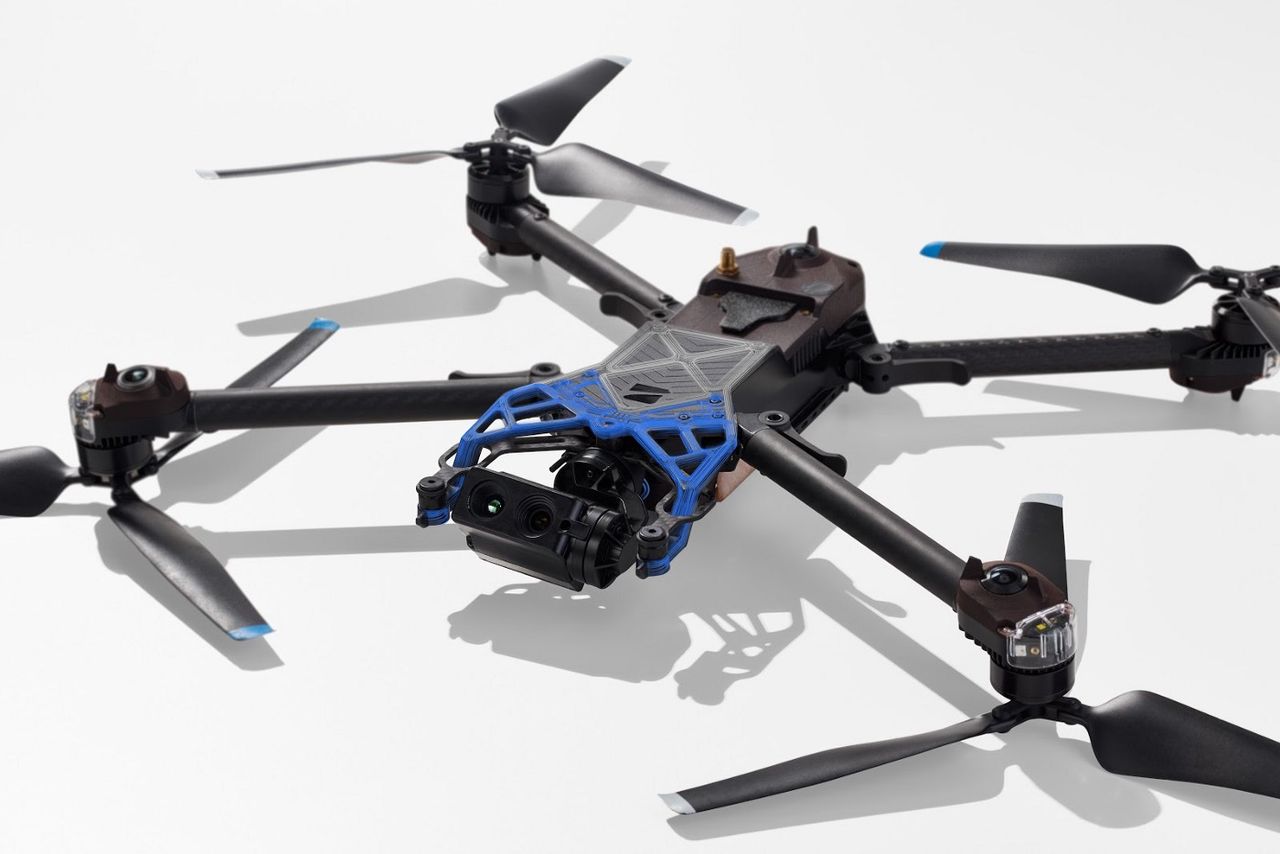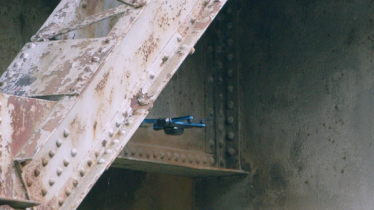At Skydio, we are committed to pursuing cutting-edge innovation across all aspects of our product design, and in many instances, this means partnering with key players at the forefront of their industries to integrate their unique capabilities into our drones.
Today, I am proud to share that Skydio is partnering with a silicon valley neighbor, Arris Composites, to bring a world’s-first technology to the drone industry. Arris Composites Additive Molding™ technology is an industry-leading process that allows the manufacture of composite parts that are stronger than titanium with region-specific property optimization while offering the geometry and design flexibility of an injection molded part. Skydio will leverage Arris’ Additive Molding for key structural elements of our drones, starting with the airframe of the upcoming Skydio X2. This collaboration has resulted in the first-of-its-kind production use of Arris’ technology in the UAV industry and will lead to several significant benefits for our customers that I will describe shortly, but first let me explain the core motivations behind the partnership.
Skydio’s relentless quest for innovation
Skydio’s relentless quest to improve the capabilities and usefulness of our flying robots does not stop at autonomy. We are constantly searching for new ways to improve the flying platform that supports the Skydio Autonomy Engine. When it comes to flight performance, weight is literally the gravity pulling against us, limiting speed, agility, and flight time. Optimizing airframe characteristics, such as weight, aerodynamics, and RF transparency is especially important for an enterprise drone like the Skydio X2, which is designed to respond to the needs of a wide range of use cases.
Our collaboration with Arris allows us to leverage composites in innovative ways that simply weren’t possible before, creating a stronger, yet lighter airframe that maximizes battery life. Moreover, we are able to achieve this structural superiority by manufacturing at scale here in California. As many of you already know, Skydio X2 is NDAA compliant and has been selected as a trusted UAV solution for the US Department of Defense as part of DIU’s Blue sUAS program. The partnership with Arris further validates Skydio’s commitment to innovation, secure supply chain security, and US-based manufacturing.
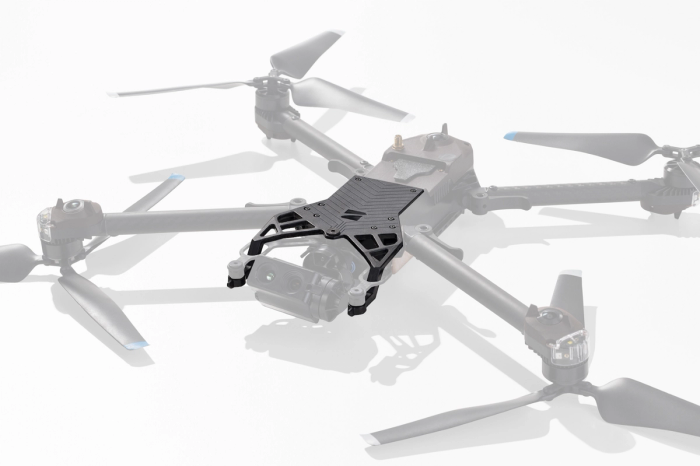
The search for the right material for an autonomous drone
Hardware design is a process of compromise and optimization. While this is true for any product, building one that flies elevates the demands of this process to a whole new level. Every gram spent on that extra bracket and the screws to attach it cost the product speed and endurance.
The same way there is the right tool for every job, there is the right material for every function. A common challenge encountered is requiring one part to serve several functions, and the materials best suited for an individual function are often ill-suited for the others. This leads the designer to either compromise on the material selected to minimally satisfy all of the required functions, or compromise on the parts form, splitting it into a multi-part assembly invariably adding weight, cost, and complexity to the design.
For drone applications, parts are often expected to offer a combination of strength, thermal dissipation, electrical grounding, and shielding, or RF transparency to allow for antennas to transmit and receive signals. When strength, stiffness, and thermal dissipation are required, aluminum and magnesium are common choices, as they have both reasonably good strength and thermal properties for their density. Strength-to-weight ratio is one of the reasons why aluminum is used so extensively in airplanes and why carbon fiber composites are becoming more and more common (although less advantageous for thermal dissipation). Metals and carbon fiber composites however block RF signals and thus can’t be used in locations near antennas. In these instances, we typically use either glass fiber composites, which offer less strength-to-weight compared to carbon fiber, but are RF transparent, or injection molded plastics, which are often less stiff and thus not relied on as a core structural element.
Integrating Arris’s Additive Molding with the Skydio X2
The Skydio X2 airframe will include a newly designed core structural element manufactured with Arris’s Additive Molding™ technology. Arris’s Additive Molding enables a single part with material properties optimized for the local functions of the X2 aircraft. The forward region of the part is designed to be as sparse and material-efficient as possible to reduce drag and weight while providing a stable base for the gimbaled imaging system. The top region of the part is designed to fully enclose the X2 airframe to protect its internal components, provide RF transparency for the GPS antenna residing beneath it, and offer a very strong structural tie between the front arm locations. The prototype solution before engaging with Arris required a multi-part, multi-material assembly consisting of glass fiber composites, carbon fiber composites, aluminum brackets to form joins and offer mounting features, and screws to join these parts. Arris’s Additive Molding™ was able to create a single part with engineered material properties catering to the different functions throughout the part.
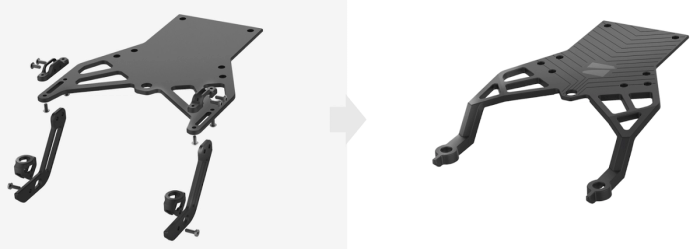
The forward region is achieved using carbon fiber composite in engineered orientations optimizing for strength-to-weight while minimizing the frontal area that will induce drag on the X2 aircraft. The part then transitions to glass fiber used over the top region of the drone to allow the GPS antenna to receive signals from satellites. To provide the strong structural tie required between the front arm locations, the part uses glass fibers strategically placed in thicker regions with engineered orientations, while allowing thinner sections in regions of lesser structural demands.
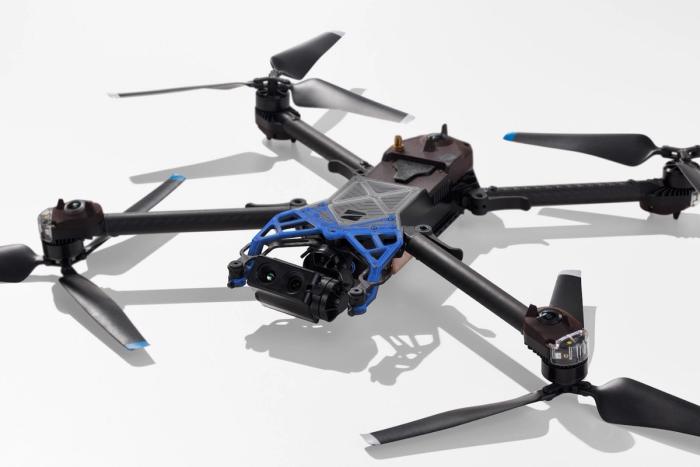
The result is a consolidation of what used to be a 17-piece assembly (2 carbon composite plates, 1 glass fiber composite plate, 4 aluminum brackets, and 10 fasters) into a single part with improved functionality across the board. It does so while offering a 25% weight reduction. In a game of gram chasing to maximize flight performance, Arris’s Additive Molding™ opens a huge design space for Skydio to deliver drones that are tougher, fly longer, and pack better.

